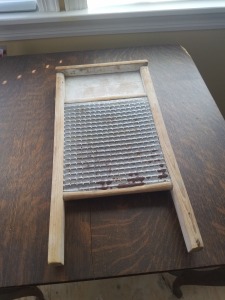I tend to think of the 1700s as static in terms of women’s lives but of course it wasn’t. Although Colonial women spent significant time spinning, weaving (if they had a loom) and making candles, as the century wore on households transitioned from frontier living where everything had to be made in-house to a time where necessities could be purchased. Of course the coastal cities like New York, Philadelphia and Boston enjoyed a higher standard of living even before the Revolution. Clothing or fabric, furniture and other luxuries were imported from England and the daughters of affluent households, well staffed with servants and/or slaves, had no need to use the wheel. They did ‘fancy’ work: embroidery of other decorative needlework.
But I digress.
By the late 1700s even rural communities, even in Maine, had access to items which could be purchased – such as dress goods – that would make a woman’s life easier. (Salem with its fast merchant ships and ties to the Orient, imported cloth of all kinds from cotton muslin to silk, cashmere shawls from India and more. Some of these goods made it away from the coasts. It is no surprise to learn that Salem at this time was the wealthiest city in the United States.) Labor could be hired to help in the fields and in the house. Will Rees, traveling weaver, was not the only (male) weaver who went from house to house plying his trade. (Women weavers were bound to their homes.) Spinners could also be hired, Usually widows or unmarried daughters in a large family, these women would spin for an agreed upon price.
But what about the frontier women. The frontier continued to push west and, by the late 1790’s, was pushing past Pittsburgh. Contemporary observers of Pittsburgh were vastly critical of the dirty streets, through which hogs ran unheeded. Most of the houses were wood or frame, but brick was beginning to take over. Glass for windows was imported at large expense. For women, moving to town no matter how dirty, made their lives less arduous. Tasks could be given over to the candlemakers, the washerwomen, dressmakers and shoemakers. Galatin (an important figure during the Whiskey Rebellion) was a weaver. By 1807 there were six professional bakers. In fact, by the 1800’s, the wealthy began building mansions outside of town and Pittsbugh began offering social and cultural opportunities.
The frontier had moved west to Ohio, Kentucky and Illinois.

